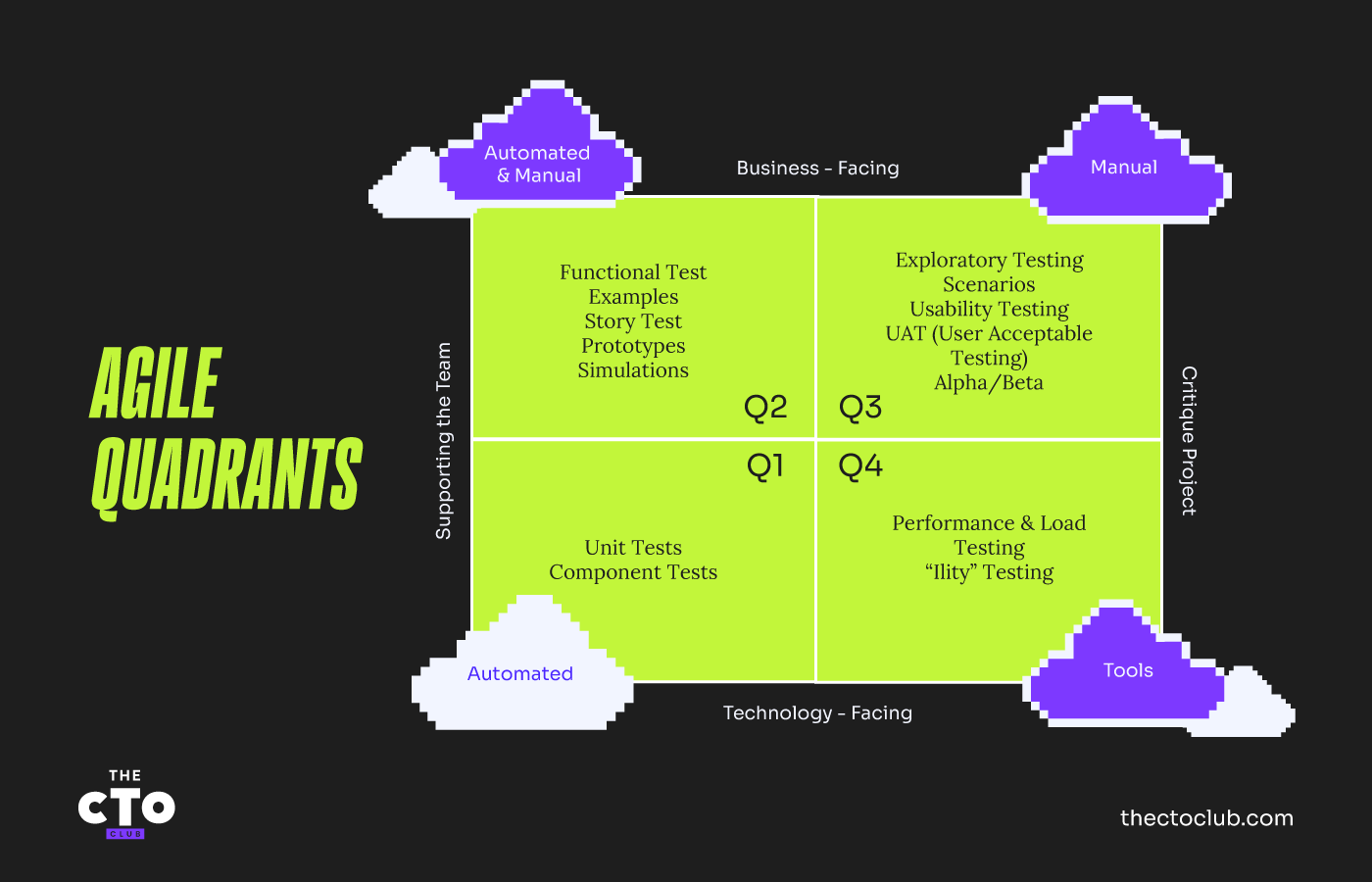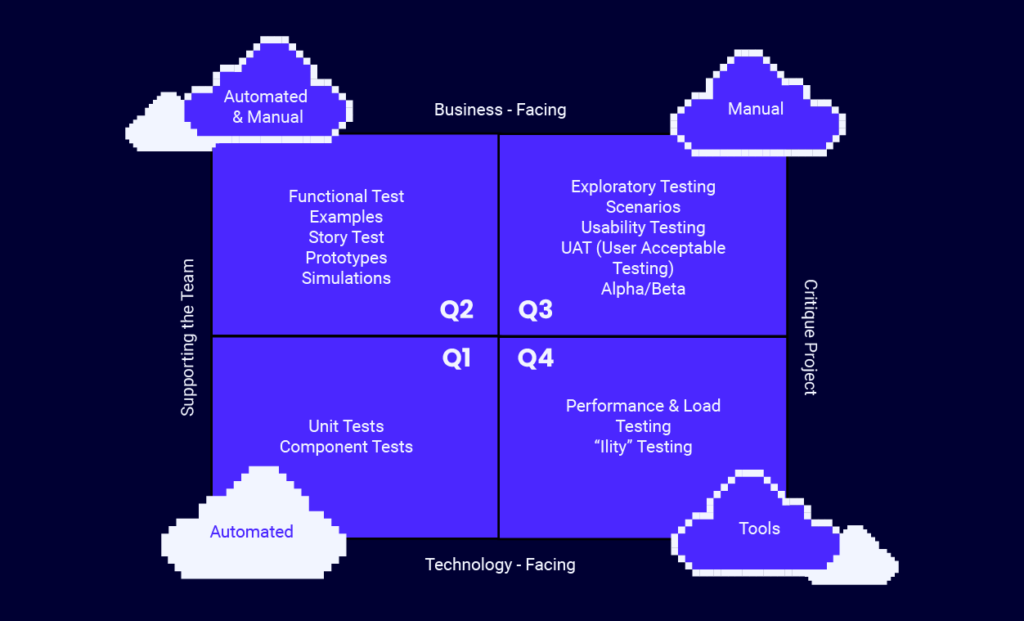The industry is moving towards Agile testing methodologies. With Agile, software development is incremental. The development team works on the software in smaller increments and continuously assesses the software development life cycle to accommodate changes.
Continuous integration is key to delivering quality products. Testing teams can start procedures early to deliver software quicker and fulfill end-user expectations. Enhance your strategy by incorporating automation tools designed for QA to reduce testing cycles.
As organizations face increasing pressure to deliver software faster without compromising quality, Agile testing has emerged as the solution that balances speed with reliability.
Unlike traditional testing approaches that occur after development is complete, Agile testing is integrated throughout the development process by incorporating automation tools designed for QA. This allows teams to identify and address issues earlier.
What Is An Agile Testing Method?
Instead of the traditional Waterfall model's linear approach, Agile testing methods shorten the process, add flexibility, and focus on iteration to create better products. For Agile methods, customer feedback is essential and helps inform decisions for improvement.
Agile testing adapts to changing requirements and priorities in real-time rather than following a rigid, predetermined plan. This approach ensures that testing activities align with the most current understanding of what the software should do, reducing wasted effort and increasing relevance.

Key Features Of Agile Methods
As organizations increasingly adopt Agile methodologies, understanding these distinctive features becomes essential for implementing effective testing practices throughout the development lifecycle.
Key Features Of Agile Methods
- Ongoing Testing: Continuous testing provides developers with constant customer feedback to help deliver error-free products. Testing begins on day one of the sprint and continues throughout development.
- Continuous Improvement: The iterative approach involves improving the product and the team. Regression testing ensures new features don't disrupt previous functionality. Each sprint provides learning opportunities to enhance processes.
- Feedback Response: Constant customer collaboration shortens feedback response time and simplifies implementing new features. This rapid feedback loop helps teams course-correct quickly when needed.
- Whole-Team Approach: Testing is everyone's responsibility, not just dedicated testers. Developers, product owners, and even stakeholders participate in different aspects of quality assurance.
- Test Automation: Wherever possible, repetitive tests are automated to speed up the testing process and provide consistent results. This enables faster feedback on code changes.
Key Features Of Agile Methods
- Ongoing Testing: Continuous testing provides constant feedback from customers to developers to help deliver error-free products. Testing begins on day one of the sprint and continues throughout development.
- Continuous Improvement: The iterative approach involves improving both the product and the team. Regression testing ensures new features don't disrupt previous functionality. Each sprint provides learning opportunities to enhance processes.
- Feedback Response: Constant customer collaboration shortens feedback response time and simplifies implementing new features. This rapid feedback loop helps teams course-correct quickly when needed.
- Whole-Team Approach: Testing is everyone's responsibility, not just dedicated testers. Developers, product owners, and even stakeholders participate in different aspects of quality assurance.
- Test Automation: Wherever possible, repetitive tests are automated to speed up the testing process and provide consistent results. This enables faster feedback on code changes.
Skills Required for Agile Testers
Successful Agile testing requires a blend of technical knowledge and soft skills.
Communication Skills
Agile testers must collaborate cross-functionally with developers, DevOps engineers, and business analysts. They must articulate technical concepts clearly and practice active listening to fully understand requirements.
The ability to convey testing concerns in business helps stakeholders understand the impact of quality issues on project goals. Effective communication also enables testers to advocate for testing needs within the development process.
Technical Skills
- Test Automation Proficiency: Familiarity with automation frameworks like Selenium or Cypress enables efficient regression testing and continuous integration.
- Coding Knowledge: Basic programming skills help testers understand application code and write effective test scripts, allowing them to communicate more effectively with developers.
- CI/CD Understanding: Knowledge of continuous integration processes helps testers integrate their work into the development pipeline. Understanding how test results impact deployment decisions is crucial.
- API Testing: Ability to test application interfaces independently of the UI allows for more thorough and efficient testing. This skill becomes increasingly important as applications adopt microservice architectures.
Adaptability and Problem-Solving
Agile testers must embrace change, think creatively, and prioritize effectively. They must be comfortable with ambiguity and capable of making decisions with incomplete information.
When faced with tight deadlines, Agile testers must identify the most critical areas to test based on risk assessment. This requires analytical thinking and practical judgment about where defects are most likely to occur or would have the most significant impact.
Testable Acceptance Criteria
Acceptance criteria are specific conditions a software feature must satisfy to be accepted by stakeholders. They serve as the ultimate definition of "done" for user stories.
Well-crafted acceptance criteria prevent misunderstandings between development teams and business stakeholders by establishing a clear, shared definition of what a completed feature should do. They also provide the foundation for acceptance tests that verify the feature meets requirements.
Characteristics of Good Acceptance Criteria
- Specific and Concrete: Avoid vague terms like "user-friendly" in favor of precise descriptions of expected behavior.
- Measurable: Include quantifiable metrics where possible, such as performance benchmarks or specific user actions.
- Achievable: Realistic within project constraints and current technology capabilities.
- Testable: Can be verified through testing procedures with clear pass/fail results.
- User-Focused: Written from the user value and needs perspective rather than technical implementation.
Example in Practice
For an enterprise dashboard feature: "As a CTO, I want real-time system health monitoring to address performance issues before they impact users proactively."
Effective criteria include:
- The dashboard displays critical metrics (CPU, memory, response time, error rates) for all production services
- Metrics refresh automatically every 30 seconds without manual intervention
- Performance anomalies trigger visual alerts within 60 seconds of detection
- Historical trend data is accessible through single-click drill-downs for any metric
- The system allows configurable thresholds for different service tiers
Without these specific criteria, developers might implement monitoring that technically works but fails to meet executive needs—such as a dashboard that shows basic metrics but requires manual refreshing, lacks alerting capabilities, or doesn't provide the historical context needed for effective decision-making. These shortcomings would significantly reduce the feature's value for strategic technical leadership.
Agile Testing Strategy
A well-defined testing strategy balances speed with quality in Agile development. It provides a framework for making consistent decisions about what to test when to test it, and how to approach different testing challenges.
An effective strategy evolves based on project learnings and changing requirements but maintains core principles that guide testing activities across sprints and releases.
Leveraging Agile Testing Quadrants
The Agile Testing Quadrants framework helps determine which testing types are most relevant based on project context:
- Q1 (Technology-Facing, Team Support): Unit and component tests verify that the code works as intended. These tests are typically automated and run with each build to provide immediate feedback to developers.
- Q2 (Business-Facing, Team Support): Functional testing ensures the application meets business requirements. This includes story tests, prototype evaluations, and simulations that validate the solution addresses real user needs.
- Q3 (Business-Facing, Product Critique): Exploratory, usability, and user acceptance testing evaluate how well the solution works from the user's perspective. These tests often uncover issues that weren't anticipated in requirements.
- Q4 (Technology-Facing, Product Critique): Performance, load, security, and compatibility testing assess non-functional quality aspects. These tests ensure the application will perform reliably in production environments.
A balanced testing approach includes elements from all quadrants, though the emphasis may shift based on project needs and risks.
Effective Documentation
Maintain valuable records without creating burdensome overhead:
- Create lightweight, adaptable test plans that focus on strategy rather than detailed test cases
- Document test cases just before they're needed to ensure they reflect current requirements
- Use visual formats like mind maps and flowcharts to communicate test coverage more efficiently
- Maintain living documentation that evolves with the product instead of becoming outdated
Documentation in Agile should be minimal but sufficient—enough to support testing activities and knowledge sharing without becoming a maintenance burden.
Continuous Integration and Testing
- Define which tests should be automated at each level (unit, integration, UI) to maximize efficiency
- Structure automated tests in layers for fast feedback, with the quickest tests running most frequently
- Establish clear quality gates for code progression between environments
- Implement monitoring and alerting to catch issues in production quickly
Integrating testing into the CI/CD pipeline ensures quality checks happen automatically with each code change, reducing the risk of defects reaching production.
Agile Methodology Types
Different Agile methodologies provide frameworks for organizing development and testing work. While they share common principles, their specific practices can influence testing integration.
Scrum
Scrum, characterized by fixed-length sprints, involves a team with defined roles: project manager, product owner, scrum master, and other members. The Scrum Master controls implementation.
In Scrum, testing must fit within the sprint timeframe, which encourages automation and requires careful planning to ensure features can be thoroughly tested before the sprint ends. The sprint review provides a natural opportunity to demonstrate tested functionality to stakeholders.
Kanban
This management method helps maximize work efficiency in DevOps software development . A Kanban board tracks stages, with notes representing tasks at each stage. It visualizes task progress and helps complete projects with defined goals.
Kanban's continuous flow approach allows testing when features are ready without waiting for sprint boundaries. This can enable faster feedback but requires close coordination between developers and testers to maintain flow.
Related Read: AGILE VS DEVOPS: WHICH SHOULD YOU CHOOSE AND WHY
Agile Quadrants
Designed initially by Brian Marick, Agile quadrants help determine the QA process for Agile projects. They provide a holistic view of testing needs and help teams ensure they're addressing quality from multiple perspectives.

Q1: Unit and Component Testing
The testing team performs unit and component testing repeatedly to ensure product quality. Automation testing makes continuous feedback more effective.
These tests focus on verifying that individual components work correctly in isolation. They're typically automated and run frequently, providing rapid feedback to developers about code quality.
Q2: Functional Testing
Functional testing can use automation or manual techniques. End-users check core functionality through prototypes and simulations, focusing on requirements.
These tests verify that the application meets business requirements from a user perspective. They bridge the gap between technical implementation and user needs, ensuring the solution delivers the expected value.
Q3: User Acceptance Testing
This includes user acceptance, exploratory, and usability testing. The testing team and end-users review the product backlog and provide feedback.
These tests evaluate the solution from the user's perspective, often identifying issues that weren't anticipated in requirements. They focus on how well the software meets user needs rather than just whether it works as specified.
Q4: Performance Testing
Automated test execution checks the software's performance and security using appropriate testing tools.
These tests address non-functional requirements like load capacity, security, and compatibility. They ensure the application will perform reliably in production environments and under various conditions.
Benefits Of Using Agile Methods
Agile methods provide several benefits for testing and quality assurance:
- Flexibility to change and adjust features as market needs or customer requirements evolve, ensuring the final product remains relevant
- Regular end-user feedback throughout development reduces the risk of building the wrong solution
- Quick error detection due to continuous testing, lowering the cost of fixing defects
- Cost savings from avoiding unsuitable products by validating assumptions early and often
- Higher quality products resulting from integrated quality practices throughout development
- Increased customer satisfaction through constant feedback and alignment with needs
These benefits directly contribute to faster time to market with higher-quality products that better meet user needs, a significant competitive advantage in today's fast-paced market.
How To Implement Agile Methodologies
Here's a simple step-by-step implementation approach.
1. Plan Ahead
Gather stakeholders to plan the iteration's aim, scope, schedules, risks, and test plan. Identify key quality risks and determine how testing will address them.
The planning phase establishes a shared understanding of what will be developed and tested in the iteration. It's important to keep planning lightweight while addressing critical testing needs.
2. The Testing Process
This involves iterations of software development and testing to accomplish quality assurance needs. Teams often use tools like Jira Test Management to track testing activities.
Testing happens concurrently with development rather than after it. This requires close collaboration between developers and testers, with testing beginning as soon as testable increments are available.
3. Keeping Track Of Progress
Stakeholders meet weekly to assess progress against milestones. These meetings provide opportunities to identify and address testing bottlenecks or challenges.
Visibility into testing progress helps the team make informed decisions about release readiness and risk. Visual management tools like dashboards can help communicate testing status effectively.
4. Acceptance Review
The team decides whether the software meets user acceptance criteria and is ready to go live. This review focuses on whether the solution delivers value from the user's perspective.
Acceptance reviews should include demonstrations of working software rather than just discussions of what was completed. This ensures everyone has a shared understanding of what's being delivered.
5. Feedback And Lessons Learned
Teams provide inputs to improve the next sprint. Effective feedback loops require a test management system that adapts to real-time changes.
Retrospectives should include a specific discussion of testing challenges and successes. Continuously improving testing practices based on experience leads to more efficient and effective quality assurance over time.
Stay Agile!
Agile testing enables early and solid product delivery that meets end-user requirements. This technique yields happier teams and satisfied customers, making it beneficial to incorporate into your testing process.
As software development accelerates, agile testing will become even more critical for maintaining quality while increasing speed. Organizations that master Agile testing practices gain significant competitive advantages through faster delivery of higher-quality products.

Related Resources
Related Tools
- OPEN SOURCE ETL TOOLS FOR QA TEAMS
- PERFORMANCE TESTING SOFTWARE FOR QA TEAMS
- ETL TESTING AUTOMATION TOOLS FOR QA TEAMS
- TEST CASE MANAGEMENT SOFTWARE



